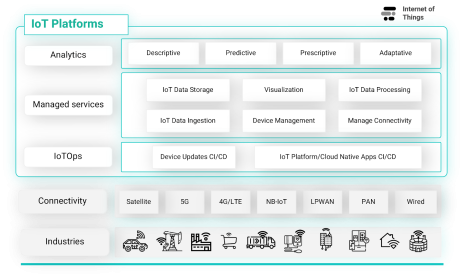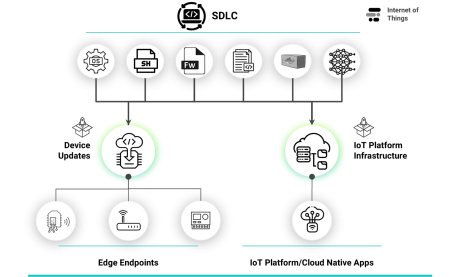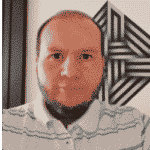As the proliferation of IoT devices continues to expand, IoTOps is becoming increasingly important. A few years ago, the focus was on managing firmware updates for constrained devices. Today, we are living in a hyperconnected era in which current devices need to support complex applications rich in edge computing, edge AI-based in the deployment of Machine Learning and AI models, and complex UI interactions, among other essential capabilities. IoTOps is the key to scaling and carrying these applications’ lifecycles, complying with the high demand from various industries. Let’s explore how IoTOps seamlessly integrates into the broader landscape of an IoT platform.
Scaling Across Ecosystems: From Devices to Data-Driven Decisions
In order for IoTOps to scale up and support different types of applications updates for cutting-edge devices, one must understand that different industries have unique device ecosystems and use cases. The following diagram starts with a representation of those at the bottom, illustrating different industry-specific device types—such as industrial sensors in manufacturing, medical equipment in healthcare, and smart appliances at home—each with distinct requirements for connectivity, latency, security, and update frequency.

As we move upward in the diagram, several connectivity alternatives are shown, which are key to integrating IoT devices with IoT platforms. These include both wireless and wired technologies, ranging from high-bandwidth options like 5G and 4G/LTE to low-power wide-area networks (LPWAN, NB-IoT) and personal area networks. Satellite connectivity extends IoT reach to remote or infrastructure-scarce areas, while traditional wired connections remain critical for environments demanding high reliability and minimal latency.
Finally, the three sections at the top of the diagram represent the IoT platform, which is composed of three major elements:
- IoTOps: While it shares some similarities with traditional DevOps, IoTOps is distinct due to its focus on hardware-aware processes, device fleet integration, and cross-architecture support. It comprises two main domains, shown in the diagram below, each with its own challenges and requiring specific strategies for efficient management.

- The first domain is device updates, which require CI/CD pipelines capable of handling diverse hardware architectures and update types, such as firmware, OS, drivers, native services, low-level components, microservices, AI/ML models, and scripts.
- The second domain involves CI/CD for IoT platform services and cloud-native applications, supporting managed services, data pipelines, and analytics that operate across cloud and edge environments.
- Managed services: These form the core of the IoT platform’s functionality, enabling seamless integration between physical devices and the digital ecosystem. Managed services provide comprehensive capabilities for device lifecycle management, including secure registration, provisioning, decommissioning, and remote command execution. They also power the IoTOps layer for device updates, support real-time device monitoring, and handle all aspects of IoT data: ingestion, aggregation, storage, processing, and visualization. Together, these services are essential for the efficient and scalable management of devices within the IoT platform.
- Analytics: At the top layer of the IoT platform, analytics plays a critical role in deriving value from device-generated data. Depending on the maturity of the IoT solution, this layer can range from basic descriptive and diagnostic analytics to more advanced predictive and prescriptive models, following the standard analytics maturity model.
Together, IoTOps, managed services, and analytics form a unified stack that turns device data into real-time insights and responsive capabilities. This architecture enables organizations to build intelligent, scalable IoT solutions that adapt to evolving needs, whether in industrial settings, industry-specific domains, or smart environments.
Future-Proofing IoT Starts with IoTOps
As AI rapidly reshapes the digital landscape, IoT-based applications are evolving to deliver more sophisticated experiences, powered by edge computing, real-time analytics, and multi-layered device intelligence. To meet the growing demands of speed, scalability, and cross-team collaboration, organizations need more than just agile development; they need a robust IoTOps strategy architected from the start of every IoT project.
At Globant, our IoT Studio is dedicated to helping organizations design and implement this strategy, combining deep expertise in device ecosystems, cloud-native architectures, and AI integration to accelerate the development and lifecycle management of next-gen IoT solutions. Ready to bring your IoT vision to life? Explore our IoT Studio and discover how we can help you build the connected solutions of tomorrow.




